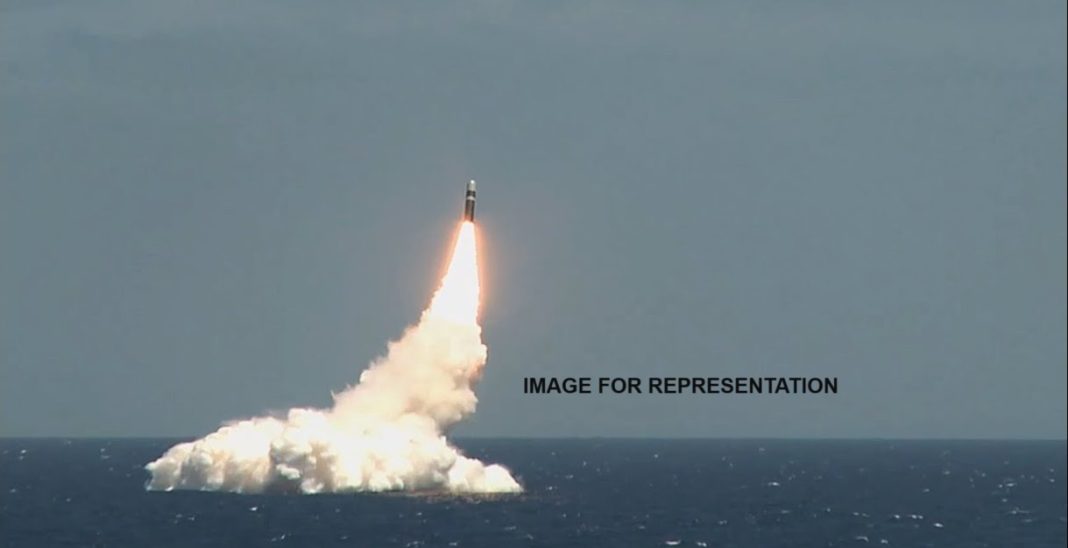India has successfully achieved a significant milestone in its maritime nuclear deterrence strategy with the operationalization of the sea leg. The test launch of a long-range ballistic missile from its indigenous nuclear-powered submarine marks a pivotal moment, extending the reach of its nuclear capabilities to much of mainland China.
The missile, a K-4 submarine-launched ballistic missile boasting a range of 3,500 kilometers, was test-fired from the newly commissioned INS Arighat on November 27 in the Bay of Bengal. This event comes as a revelation, as it challenges the widespread belief regarding the capabilities of India’s second indigenous nuclear-powered ballistic submarine. While the Indian government has not publicly confirmed the details of the test, a Notice to Airmen (NOTAM) was issued, warning flights to avoid a specific corridor, underscoring the seriousness of the test.
Prior to this, India’s first nuclear submarine, INS Arihant, was limited to K-15 missiles with a range of only 750 kilometers. This restricted capability was barely sufficient for engaging significant targets in China or even Pakistan, emphasizing the necessity for a more potent maritime deterrent. The introduction of the K-4 on INS Arighat significantly enhances India’s strategic posture in the region.
The significance of the K-4 missile operation cannot be overstated. Nuclear-powered submarines equipped with reliable ballistic missile systems are considered the most survivable delivery method in nuclear warfare, primarily due to the challenges of detecting submarines in the ocean’s depths. However, constructing a reliable underwater vertical launch system presents considerable technical challenges that India has now begun to surmount.
Manpreet Sethi, a nuclear expert, highlighted that for submarines to be effective in a nuclear context, they need to be equipped with missiles that allow them to remain at a safe distance from potential threats. The successful test of the K-4 missile aboard INS Arighat is a significant step toward achieving this requirement.
Regional tensions have been escalating, particularly in the context of China’s burgeoning military capabilities and its deployment of nuclear submarines (SSBNs) in the Indian Ocean Region. These developments raise strategic concerns for India, emphasizing the importance of survivability in nuclear retaliation. With India’s extensive coastline and geographic setting, SSBNs like the INS Arighat can maintain a clandestine posture in the deep ocean, ensuring the integrity of its second-strike capability.
India’s naval ambitions continue with plans to commission its third nuclear submarine, the INS Aridhaman, by 2025. This submarine is set to carry K-4 missiles, further operationalizing India’s second-strike capabilities. Following the Aridhaman, India is also developing another advanced SSBN, the S-4, and an additional fifth SSBN equipped with the K-5 missile with a range of 5,000 kilometers. This expanding fleet hints at a strategic shift in India’s defense posture, wherein the necessity of keeping submarines on continuous patrol becomes evident.
The test comes amid ongoing debates regarding India’s No First Use (NFU) nuclear policy, which is becoming increasingly contentious as the lines between conventional and nuclear deterrents blur. The NFU policy, premised on principles of credible minimum deterrence and massive retaliation, faces challenges due to the growing nuclear capabilities of China and the nuanced threats in the Indo-Pacific region.
India is also cognizant of the communication challenges inherent in the operation of its nuclear submarines. The command and control systems are designed to prevent unauthorized arming and launching of nuclear weapons, relying on a complex interplay of controls and permissive action links. However, the inherent limitations of communication systems used by SSBNs pose risks of missed commands from authority, necessitating continuous improvements in operational protocols.
The successful test of the K-4 missile from INS Arighat signifies a robust strategic advancement for India, bolstering its nuclear deterrent capabilities and enhancing its geopolitical posture in an increasingly complex security landscape. As the region’s dynamics evolve, India’s commitment to maintaining a credible and survivable nuclear deterrent becomes ever more critical.









